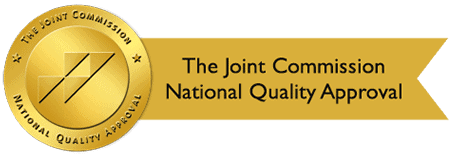By: Design for Change Recovery
Categories:
How Do IOPs Differ from PHPs or Standard Outpatient Programs?
You are here:In your search for effective outpatient addiction treatment, you’ll come across terms such as Intensive Outpatient Programs (IOPs), Partial Hospitalization Programs (PHPs), and Standard Outpatient Programs. They sound similar but have distinctive differences.
Determining the best level of addiction treatment for your needs can be a challenge. It is confusing to have so many options and treatment approaches to choose from. Knowledge of how the programs differ will help you make an informed choice.
Each program has options that may or may not be right for your situation. With that in mind, here are some of the differences between IOPs, PHPs, and standard outpatient programs you should be aware of before choosing.
What Are Intensive Outpatient Programs (IOPs)?
An IOP is an intensive outpatient program. IOPs are part of the addiction continuum of care that includes all programs ranging from basic to extensive.
Each type of program occupies a specific level across the continuum of care. The first level includes standard outpatient programs. Level II is formed by Intensive Outpatient Programs and Partial Hospitalization Programs. At level III are both inpatient hospitalization and residential programs. The highest level, Level IV, is medically supervised, intensive inpatient care.
How Do IOPs Differ from Other Treatment Programs?
Typically, IOPs provide more weekly sessions than other outpatient programs. You can expect to receive from 9 to 19 hours of treatment per week. In this type of treatment, you’ll progress through stages or tiers to ensure that you adjust properly.
Another distinguishing feature of IOPs is that you must qualify for the program. Before you can enter an IOP, the following criteria must be met:
- Not at high risk for relapse
- Stable home environment
- Strong support network
- No uncontrolled physical or mental health issues
In an IOP, it’s vital that you are comfortable interacting with others in a group therapy setting.
It’s important to remember that IOPs are not the best option for some individuals. These programs are for those who have mild to moderate addictions and a strong support structure. Individuals with prolonged or severe addictions should seek treatment through an inpatient program.
What Are the Stages or Tiers of Treatment in IOPs?
Each stage or tier is crucial to the overall success of the program. The four stages of IOPs are also incorporated into most addiction treatment programs.
As described by ASAM, the four sequential stages of IOPs are:
- Entry and engagement
- Early recovery phase
- Maintenance stage
- Community support stage
During the entry and engagement phase, you will adjust to treatment while improving your recovery motivation.
Later, in the early recovery phase, you’ll learn skills that will help you develop and maintain a substance-free lifestyle.
As part of maintenance phase, you will learn how to consolidate and maintain the gains you made earlier in the treatment process.
In the community support stage, you’ll prepare for transitioning back into society and learn effective relapse prevention techniques.
How Long Does It Take to Complete An IOP?
The length of the program depends on your personal situation and progress. Typically, the entry and engagement stage is the shortest. The early recovery stage can take from six weeks to three months to complete. The maintenance stage may take two months to a year to complete. Of course, the community support stage is an ongoing process.
Therapies Provided by Intensive Outpatient Programs
Many addiction treatment facilities offer intensive outpatient programs that are customized for each client’s needs. These are some of the therapies you can expect in an IOP:
- Detoxification
- Cognitive-Behavioral Therapies
- Group Therapy
- One-on-One Counseling Sessions
- Fitness and Wellness Activities
- Nutritional Guidance
- Family Therapy
- Experiential Therapies
- Aftercare Services
Keep in mind that treatment, services, settings, and philosophies vary from program to program. However, the programs generally strive to meet the varied needs of each client.
An IOP group therapy session may consist of psycho-educational groups, skills-development groups, relapse prevention training, assertiveness training, stress management, and more.
Do You Need an Intensive Outpatient Program? Design for Change Recovery Can Help
At Design for Change Recovery, we are committed to making sure you get the best treatment for your needs. We begin with a health assessment to determine the most appropriate level of care you require. Our counselors will then create a custom program for you based on your unique circumstances.
Our intensive outpatient programs offer the most innovative, evidence-based treatment methods available today. We realize many people can’t invest the time required by inpatient programs, so we offer flexible IOPs to ensure they get the help they need. With our IOPs, clients receive addiction treatment without disrupting their daily responsibilities.
If you or a loved one is in need of an IOP, reach out to Design for Change Recovery. We’re located in beautiful Lancaster, CA and also serve clients from surrounding areas. Contact us today and one of our representatives will be available to talk with you about your treatment needs.
Sources:
- https://www.ncbi.nlm.nih.gov/books/NBK64088/ – Chapter 3. Intensive Outpatient Treatment and the Continuum of Care




